Best New Cars for Used Car Money
Welcome everyone, to the weirdest used car market of all time. According to CarGurus, the average used car price in America clocked in at $30,766 as of January 2022.
While this means that your old car is worth way more than you think, it poses an interesting question. Why buy a used car when you could bag a new car for the same money? Upon pitching this idea, an interesting debate broke out over the best new car for $30,766. Suggestions of sports cars and hybrids and small crossovers were flung across email chains like Mardi Gras beads. The vaunted battle of left-brain sensibility and right-brain hedonism brought about many bright ideas, though consolidation seemed tricky. Nevertheless, we did manage to come to a conclusion. Without further ado, here are the new cars we’d buy for the average price of a used car.
Mike’s Pick
As the only member here who’s a dad entering middle age, I should be looking for something sensible and practical. At a price cap of $30,766, there are plenty of choices. But I’m neither sensible nor practical. My current daily driver beater is a 2010 Hyundai Genesis Coupe and my past few vehicles have included a 1990 Mazda MX-5 Miata, a 2004 Mazda RX-8, and a 1997 Subaru SVX.
Safe to say, performance is a key factor in my vehicle decision, but so is a little bit of practicality. I do need space for my six-year-old son, so a backseat is a must. Also, a trunk that can hold a decent amount of gear is appreciated. This means the Mazda MX-5 Miata is immediately crossed off the list, as much as I adore that car.
The Contenders
So, what to buy then? The Subaru WRX is an obvious answer, and one I am well familiar with; I’ve owned three WRX’s of various generations over the past 10 years. But the new model is yet to have pricing announced and I’ll be shocked if it comes in under our price cap after destination charges. Plus, I am not sold on the exterior looks of the new car in the slightest and I want to try something different.
SEE ALSO: 2022 Subaru WRX Debuts With a 2.4-liter Turbo and New GT Trim With Electronic DampersThis leaves me with a few rear-wheel drive sports coupes, which is perfect. As mentioned, I currently have a slow rear-wheel drive coupe, a 2010 Genesis Coupe 2.0T. My son loves going for drives in it, and being as young as he is, he fits comfortably in the otherwise limited rear seats. I have a good number of years yet until he outgrows that area.
The Subaru BRZ and Toyota GR86 are obvious contenders as they’re some of the cheapest rear-wheel drive coupes available today. Unfortunately, both just exceed the price cap when selecting the higher trim levels, so both would need to be ordered as base models.
This, combined with their limit space are the ultimate detriments. Some would scoff at only having 228 horsepower, but these are phenomenal cars to drive and perfectly balanced. If I could squeak a BRZ Premium under the price limit, it may well have been my choice.
The Finalists
These leaves a pair of American muscle cars as my final two choices. Calling the Chevrolet Camaro and Ford Mustang muscle cars is a bit of a disservice these days. These cars have long abandoned their one-trick pony pasts and are now fully balanced, capable machines.
When we began this challenge, I was certain I would be picking a Chevrolet Camaro as my vehicle. I briefly owned a fourth-generation F-body back in the day and the nameplate has always had a soft-spot in my heart. My choice would have been the 1LT package with the 3.6L V6 that starts at $28,290 with destination charges. The base 1LS does not offer the V6, so for an extra $2,000 I get more content and a much more powerful engine over the base 275 horsepower turbocharged four-cylinder.
At this point I do not have much money left over to play with, so I must be smart. I would add the $1,995 RS package, mainly to get the 20-inch wheels and tires. The decklid spoiler and tinted taillights don’t hurt either. That leaves just enough money to splurge on the premium $395 Rapid Blue paint job.
All in, I would have a 335 horsepower coupe with a six-speed manual transmission, limited-slip rear differential, and selectable drive modes. The interior is well equipped with a power driver’s seat, rear vision camera, and wireless Apple CarPlay and Android Auto. But in the end, it wasn’t quite enough to earn my pick.
And Mike’s Winner Is…
Ultimately, I went with the Camaro’s chief rival, the Ford Mustang. It was an incredibly close decision and each choice had its pros and cons, but what won me over was the extra performance options I could sneak into the Mustang just under the price cap. Well sort of, but more on that later.
I picked the base Mustang Ecoboost which has a starting price of $28,400 after destination charges. Although there are plenty of cool colors to choose from, I’m on a bit of a theme here and will go with Velocity Blue.
The car comes with a 310 horsepower turbocharged engine that may give up a bit of horsepower to the Camaro but includes a lot more torque – 350 lb.ft. Plus, I have come to really appreciated no- shift passing on the highway that turbo engines excel at thanks to the low-end torque generated under boost.
There are plenty of performance upgrades for the Ecoboost Mustang including the High Performance Package that bumps engine power to 330 horsepower among other things, or the EcoBoost Handling Package that equips wide, sticky summer tires, an upgraded limited slip differential, premium brakes, and a MagnaRide suspension.
SEE ALSO: 2020 Ford Mustang EcoBoost High-Performance Package ReviewAlas, I cannot afford any of these upgrades. You know what though, it’s not all bad news. A lot of goodies already come as standard equipment on the Mustang. I get a six-speed manual transmission, electronic line-lock (burnouts baby!), a limited-slip rear differential, launch control, and selectable steering feel.
Mike’s Build
But I do still have over $2,300 to spend, and I can use it to make the Mustang look and perform even better. First, I’ll grab the $895 Wheel and Stripe package. It adds 19-inch wheels, but more importantly, replaces the stock 235/50R18 all-season tires with higher performance 255/40R19 tires. On the visual front, a pair of black hood stripes are included as well as fade away side stripes to ensure everyone knows I am driving a serious performance machine.
My final addition would be the $2,200 101A package. This generic sounding package adds content to the base Ecoboost Mustang such as a power driver’s seat, nine-speaker audio system, dual zone climate control, and remote keyless entry. All of these are welcome additions, but I am most interested in the toggle-switch activated selectable drive modes.
Those keeping score at home may notice that my car’s price now totals $31,495, which exceeds our price cap. But wait, here’s my technicality victory. Ford currently has a $750 incentive on the Mustang Ecoboost that when applied to my build, drops the total price after destination charges to $30,745. If Kyle and Thomas are going to be real sticklers about the price, I’ll drop the 101A package and use that money to buy myself an aftermarket exhaust system since I couldn’t quite squeeze the Active Valve Performance Exhaust into my build. Yes, I am an overgrown teenager who likes loudish cars.
Thomas’ Pick
Ah yes, the new-for-used conundrum. As a wrench-happy clown, I’ve always been prone to passing up the sensible for the ridiculous. Why buy a used Corolla for college when a hot-blooded six-speed sports sedan with a 100 per cent chance of major interior electronics failure can be had for the same money? On a grander scale, why buy a sensible new car for the average used car price of $30,766 when a used Panamera 4S can be had under that price cap? Firstly, I wouldn’t recommend a heavily-depreciated luxury car to my mom, or really anyone for that matter. Secondly, I already have one I’m dealing with, my beloved BMW 325i. Something with new bushings and a warranty does sound quite nice for a change.
A Few Considerations
Honestly, I’d be lying if I said I wasn’t considering coming way under budget with a fully-loaded Nissan Kicks. Superb efficiency, heaps of practicality, bright two-tone paint and a cracking Bose stereo all for $25,260. What’s not to love? It’s a car I’d recommend to anyone, the product and value for money is just that good. However, with such a high budget cap comes other options.
How about the Ford Maverick Hybrid? An open bed would be brilliant for hauling car parts, I adore its utilitarian design and the XLT model with the Luxury package clocks in under budget. It’s a phenomenal exercise in smart design with DIY cargo solutions, friendly styling and well-grained durable hard plastics that never feel cheap. There’s just one problem. You can’t actually buy one right now, they’re sold out. Ordering won’t reopen until summer which in my opinion, disqualifies it from this thinking exercise. A bit sad, yeah?
Maybe a Sports Car as Well?
If you’re like me who grew up watching the exploits of Johnny Knoxville and Co., learning to ollie and slamming energy drinks, this section shouldn’t be a surprise. In my house, bad decision hours are 24/7. After all, who wouldn’t want to run a rear-wheel-drive sports coupe as a daily driver? Of course, I’m talking about the Toyota GR86.
SEE ALSO: 2022 Toyota GR86 First Drive Review: Old-School, EvolvedIt’s got all the fundamentals down, a high-revving boxer engine up front, a slick-shifting close-ratio six-speed gearbox and a helical limited-slip diff out back. All things guaranteed to plaster a permanent Cheshire Cat grin across the face of the loose nut behind the wheel. By the way, that engine has been stroked out an extra eight millimeters to get rid of everyone’s least favorite party food – torque dip. With 228 horsepower and 184 lb-ft of torque on tap, the GR86 isn’t a fast car but it’s got enough poke to not feel glacial when puttering about town.
The base model with the six-speed manual gearbox stickers for $28,725 including a $1,025 delivery and destination charge which leaves a little bit of room to play. I’d tick the box for free Neptune paint because driving the equivalent of a neon monster Warped Tour shirt is absolutely underrated, chuck in the $169 all-season mats and order the TRD ducktail spoiler which can be sourced online for around $500. Figure another $300 to paint and 3M tape the spoiler and bam, one pack-a-punched sports coupe for around $29,694.
However, we have run into a bit of a problem. Why buy a daily driver more fun than your summer toy? Compared to the GR86, my 325i weighs more, is geared longer and only permits one-tire fires. Besides, the GR86’s spartan nature makes itself known on the highway with high cruising RPMs, a tinny stereo and the sound insulation of a shed. It’s a great one-car solution for thrill-seekers on a budget but I’m awfully tempted to swing in completely the opposite direction.
Crossing Over
In the end, my inherent bougieness wins out. I’ve lived with automatic headlights, heated seats and decent sound insulation for years, why stop now? What I really need is a $50,000 new car with a sticker price of $30,000. Impossible? Hardly. Say hello to the Mazda CX-30.
Like the Kicks and the Maverick, the CX-30 is a vehicle I’d recommend to anyone. Unlike those two, it feels posh. Let’s start with the styling, that makes everything else in the class seem either garish or boring. From the precision of the semi-frameless grille to the drama of the swooping fender line, the CX-30 looks gorgeous and cohesive. Granted, a little bit of utility is sacrificed for these good looks. Interior and cargo space is more on par with a compact hatchback than a small crossover. Then again, who’s bringing furniture home in a CX-30? It’s 2022, we can get it delivered.
Step inside and the CX-30 feels like a ribbon of vermilion silk slowly billowing above the competition’s mundane greyscale cityscapes. Soft materials richer than red velvet cake blanket almost every surface from the dashboard to the armrest. Every stitch is millimeter-perfect, every knob turns with the gentle yet reassuring click of unobtainable audio equipment, every contour of the seat fits your body like tailored formalwear. The available colorways deviate from dark, colorless norms to include chocolate brown, inky blue and dazzling red. Real satin metal accents drop a little sauce on top like dulce de leche drizzled over a plate of churros. Add in the satisfying rotary-controlled infotainment and solid eight-speaker standard stereo and it’s a phenomenal sanctum from the bustle of the outside world.
SEE ALSO: Subaru Crosstrek vs Mazda CX-30 ComparisonWhile the 2.5-liter engine won’t set your soul alight, it’s considerably stronger than the engines in most competitors and surprisingly smooth for an inline-four. All 186 horsepower and 186 lb.-ft. of torque get sent to both axles using a crisp six-speed automatic gearbox with carefully-selected ratios and excellent response. Think of it as a small plate of expertly-prepared food to the large plate of not very good food that many competitors’ zillion-speed gearboxes offer. Efficiency’s pretty solid too, I’ve previously had no trouble besting the government estimates of 24 MPG (9.9 L/100km) city, 31 MPG (7.7 L/100km) highway and 26 MPG (8.9 L/100km) combined.
Thomas’ Build
As the CX-30 starts at just $23,425 including a $1,225 delivery and destination charge, there’s plenty of room to move up the options list before hitting the used car average of $30,766. My pick of the range would be the $28,875 Preferred trim which includes an astonishing amount of kit. Leatherette upholstery with heated front seats, dual-zone automatic climate control, a proximity key, 18-inch alloy wheels, a power moonroof and mirrors that automatically dip in reverse to help you see curbs are all included at this price point. Those with slightly bolder tastes can step up to the $29,515 Carbon Edition which builds on the Preferred trim with red leather seats, Polymetal Gray paint and blacked-out trim.
The difference between a good car and a nice car is in the details, and Mazda has poured their blood, sweat and tears into every button and bolt on the CX-30 to make it truly feel special. Even the LED turn signals are programmed to fade in and out like incandescent bulbs so they’re more pleasing to the eyes. It all adds up to be a dazzling reminder of where the smart money is and proof that you can indeed have nice things. A slice of A5 Wagyu on a ground beef budget? Who wouldn’t say yes to that?
Kyle’s Pick
Oh man, you guys are going to make me pick the Ford Maverick, aren’t you? When Thomas first pitched this (excellent) idea, of course my mind leaned baby pickup. It’s the talk of the town, a right-sized riposte to the gargantuan trucks of today.
Then I drove the 2022 Honda Civic hatchback.
The five-door Civic is a delight. It’s roomier than either of the other cars, both for people and their things. The turbocharged engine has plenty of pick-up-and-go for something that’s still so commendably light (3,068 lb). That new interior is very nearly as classy as the Mazda’s, and it has the better infotainment system. Plus, you’ve got the choice of smooth CVT or snickety-snick six-speed manual at no extra charge. That’s a win.
There’s just one problem: I’d insist on the top Sport Touring trim because all of the safety and convenience goodies it includes. And with the mandatory $1,015 destination charge, that brings the Civic to $30,865, less than $100 over the challenge limit. I could sub in the Civic Si, which by all accounts is even more fun to drive, but it’s a sedan. As a stickler for rules, that means I must abandon the five-door Civic.
Mini Trucking
The great thing about the Maverick is that it offers so many options at this price point. Grab a top-trim Lariat with the 2.0-liter EcoBoost and you’re at $28,440, enough wiggle room to add Ford Co-Pilot360 ($650). Premium paints range from $390 to $495, but like Mike, I’m a big fan of Velocity Blue, and it doesn’t even cost extra.
SEE ALSO: Ford Maverick vs Hyundai Santa Cruz Comparison: Same But DifferentThat’s a front-drive truck, though. Say you want your baby pickup to regularly tow. The AWD EcoBoost Lariat still slides under the limit at $30,660, but there isn’t enough leftover to spec the 4K Tow Package ($745). Drop down to the XLT and you’ve got room for all that, and the XLT Luxury Package ($2,345) which adds a heated leather-wrapped steering wheel and heated front-row seats. Those things are necessary in northern states and all of Canada, and it’s my biggest complaint with Ford’s littlest truck: they’re locked behind options packages. You won’t be able to spec the Co-Pilot360 package, though.
Kyle’s Build
My favorite part of the Maverick package is how it isn’t like a typical truck though, so for my build, I’m going hybrid. Specifically, I’ll take an XLT with the lux and safety packages, and a swap to the ‘90s-tastic Cyber Orange paint ($495). I’m at $27,345 there, so lots of wiggle room to add some dealer accessories. I’d do the following at a minimum:
- Bed extender: $370
- Protective Film: $360
- Engine Block Heater: $90
- Floor Liners: $175
Specced as such, the Mav is a great all-rounder. Full disclosure, I haven’t driven it yet—but soon! The hybrid system was smooth in the mechanically similar Escape, and it makes the truck the most fuel efficient of this trio. How often do you hear that? 191 horsepower is plenty, too: I’m betting even the healthiest of the old Ford Rangers are producing around that figure from their 4.0-liter Colognes.
The cabin is pretty spacious, and personally I enjoy the fun choice of color and texture Ford used inside. It proves that a truck can be affordable without feeling cheap. Front headroom comes in at 40.3 inches (1,024 mm) with an enormous 42.8 inches (1,087 mm) of legroom. Rear passengers won’t feel too pinched either, with 39.6 and 35.9 inches (1,006 and 912 mm) of space, respectively. Worried about open-air cargo storage? There’s a small under-seat storage cubby, and enough budget left for a tonneau. And no other vehicle offers buyers the ability to 3D print their own accessories with the FITS system.
And More Reasons to Love it
Sync 3 is a perfectly serviceable infotainment system, and let’s be honest: you’re just going to use phone mirroring most of the time anyway. At least it’s a touchscreen, which remains the best user interface for passengers. No wireless charge pad, but without wireless phone mirroring, you’re gonna need a cord anyway. Thanks to its tidy dimensions and adorable, friendly styling, the Mav is a cinch to maneuver through city streets.
SEE ALSO: 2022 Ford Maverick Review: Honey I Shrunk The Work TruckThe crossover roots make it no harder to drive than a car, just with a 4.5-foot bed out back. Basically, it’s a modern-day Ranchero. The steering requires little effort, yet tracks true. Ride quality is also far better than most pickups, again thanks to those Escape-based underpinnings. There’s more wind noise in the upright Maverick, but that’s to be expected with a truck. The upgraded Co-Pilot360 pack increases driver confidence with blind-spot monitoring, too. Adaptive cruise control would be nice, but that’s locked to the Lariat only.
Both the Mazda CX-30 and Mav are capable of towing up to 2,000 lb. With a 1,500 lb payload capacity, the Ford will haul more dirt than you’d want to risk putting in that pretty Mazda, though. Beyond all that, the Maverick is cool. It’s cool because it’s unpretentious and affordable, and because millennials have fond memories of when compact trucks were actually compact. The CX-30 is the best sub-compact crossover out there, a pretty item I’d be proud to park on the driveway (if I had one), but it’s not cool. The Mustang? It can’t escape its crowd-hunting reputation. I can’t prove it spurs hair growth only on the back of one’s head—but I’m not not saying that, either. I’m looking at a press picture of a Cyber Orange XLT with a pair of surfboards poking out the back and that is the vibe I want to carry through 2022. Used car or that? Maverick, easy-peasy.
The Winner
Whelp, it looks like we chose a hybrid pickup truck that nobody can actually buy, a rear-wheel-drive sports coupe and a subcompact crossover that sacrifices a bit of utility for premium aspirations. On the face of it, we may have overshot the premise a bit. Or have we? Why don’t we combine the cool factor of the Maverick, the performance of the Mustang and the premium image of the CX-30 into one single car? A car so esteemed, it’s been a global archetype for nearly 46 years. I’m talking about the new for 2022 Volkswagen GTI.
Yes, Volkswagen’s iconic hot hatch squeaks in under budget at $30,540 including a $995 destination charge. For that price, you’ll need to spec the base S trim with a manual gearbox and forego premium paint. While that may sound a touch austere, standard equipment actually seems far from sparse. Rain-sensing wipers, dusk-sensing headlights and heated sport seats upholstered in funky plaid cloth all work to provide comfort and convenience. Wireless charging and wireless phone mirroring add connectivity while 30-color adjustable interior ambient lighting sets the mood. That all seems like very appropriate kit for $30,000.
The base S trim includes an actual volume knob and a tuning knob which is a nice touch for an otherwise complicated UX. Throw in Volkswagen’s excellent Digital Cockpit LCD gauge cluster and the tech package transforms from intimidating to generally amicable. Good stuff.
The Best of All Worlds
While many hot hatches feature 800-decibel aesthetics with more spoilers and gauges than the entire SEMA show, the GTI is aesthetically restrained. The five-segment fog lamps may stand out against otherwise conservative German design, but the only real clues to the GTI’s potency come courtesy of a twin-exit muffler and a handful of red accents. It’s a car you could happily drive to a posh restaurant without feeling that you look immature or take through the Taco Bell drive-thru without feeling overdressed. The true definition of transcending class.
SEE ALSO: 2022 Volkswagen GTI and Golf R First Drive ReviewIn terms of performance, the GTI comes out swinging with a slick six-speed manual gearbox, a punchy yet refined 241-horsepower turbocharged engine and what Volkswagen calls a VAQ diff. Essentially a Haldex coupling on the front axle, it uses hydraulic pressure to vary the limited-slip function and provide actual torque vectoring. In practice, it’s wickedly sharp and curbs understeer beautifully when the roads get twisty. Settle back down and you’ll find remarkable refinement courtesy of well-applied sound deadening and careful wind tunnel shaping. While the suspension is firm and sporting, it never feels harsh.
It’s a practical and safe experience too. There are seat belts for three and room for two in the rear seat while popping the hatch reveals enough cargo space to take on a music festival like a boss. As with most Volkswagens, steering column and seat adjustment ranges are significant enough to accommodate a wide variety of body types. Standard adaptive cruise control takes the fatigue out of long road trips while standard blind-spot monitoring with rear traffic alert, automatic emergency braking and lane assist provide an excellent safety net. While the GTI hasn’t been tested by the IIHS or the NHTSA, a five-star Euro NCAP crash rating for the standard car gives us confidence in its crash protection.
By focusing on the overall package, Volkswagen has blended fun, function, aesthetic coolness and bubble-wrap safety into one irresistible $30,000 hot hatch. Why buy an average used car when you can drive one of the most iconic hot hatches of all time?
Become an AutoGuide insider. Get the latest from the automotive world first by subscribing to our newsletter here.
More by Thomas Hundal



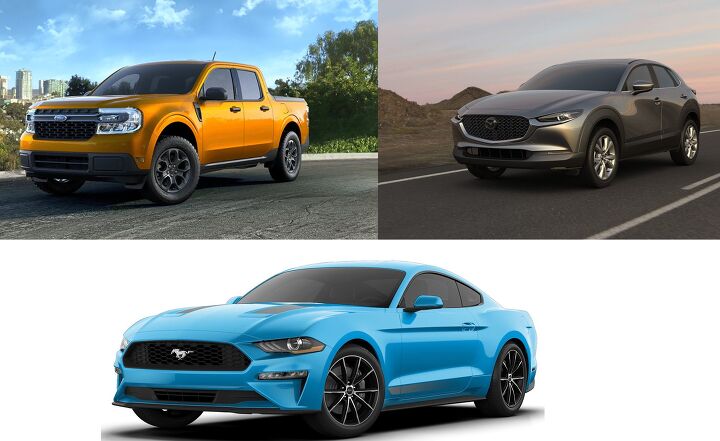

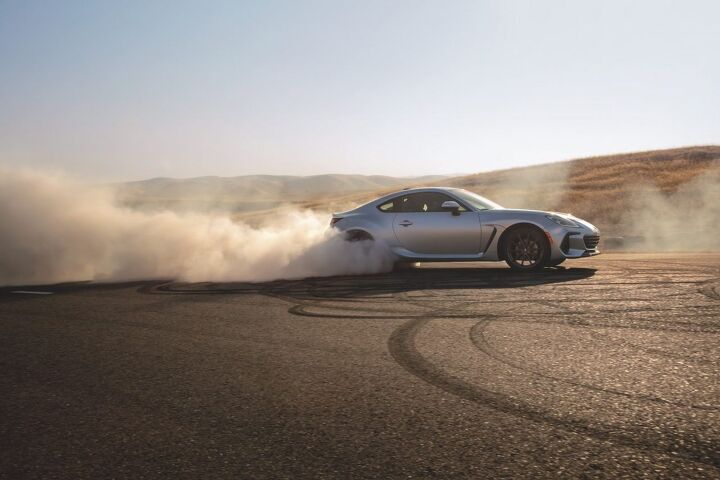
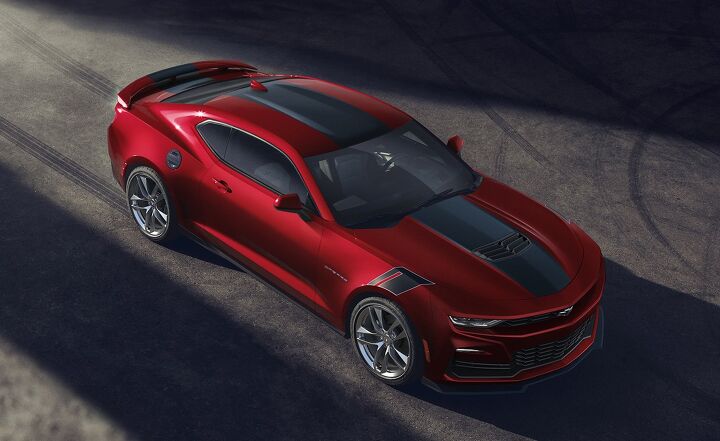
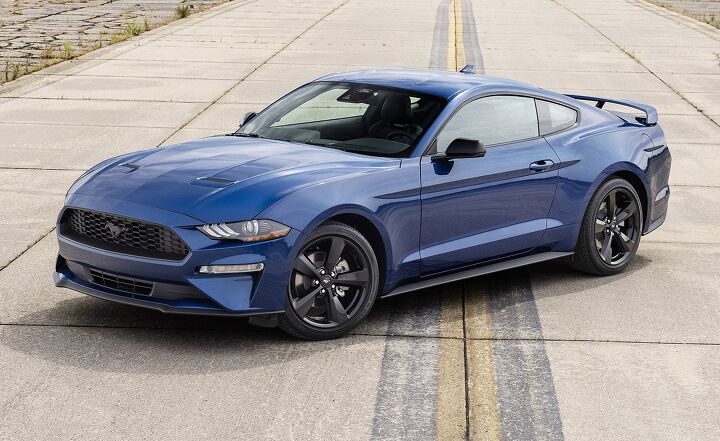

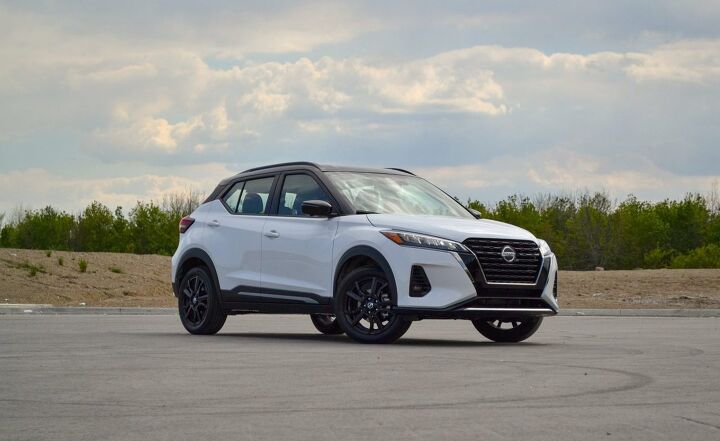
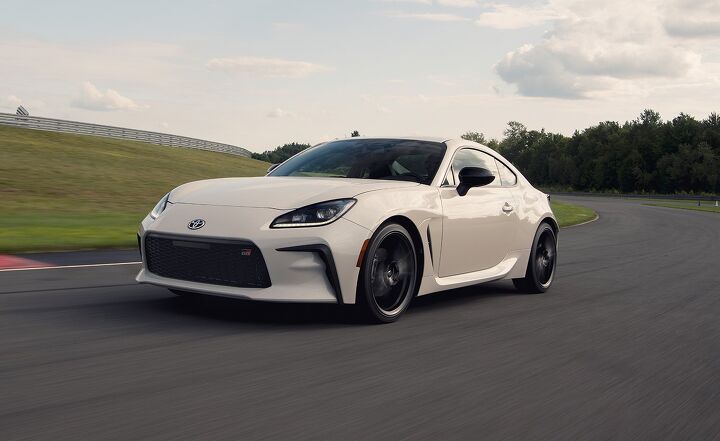





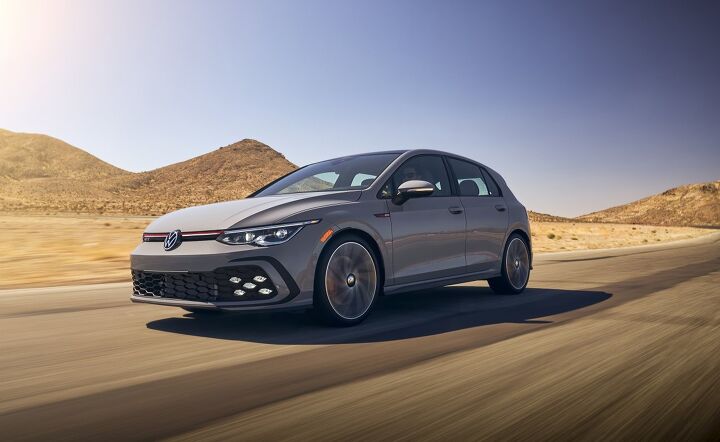






























Comments
Join the conversation